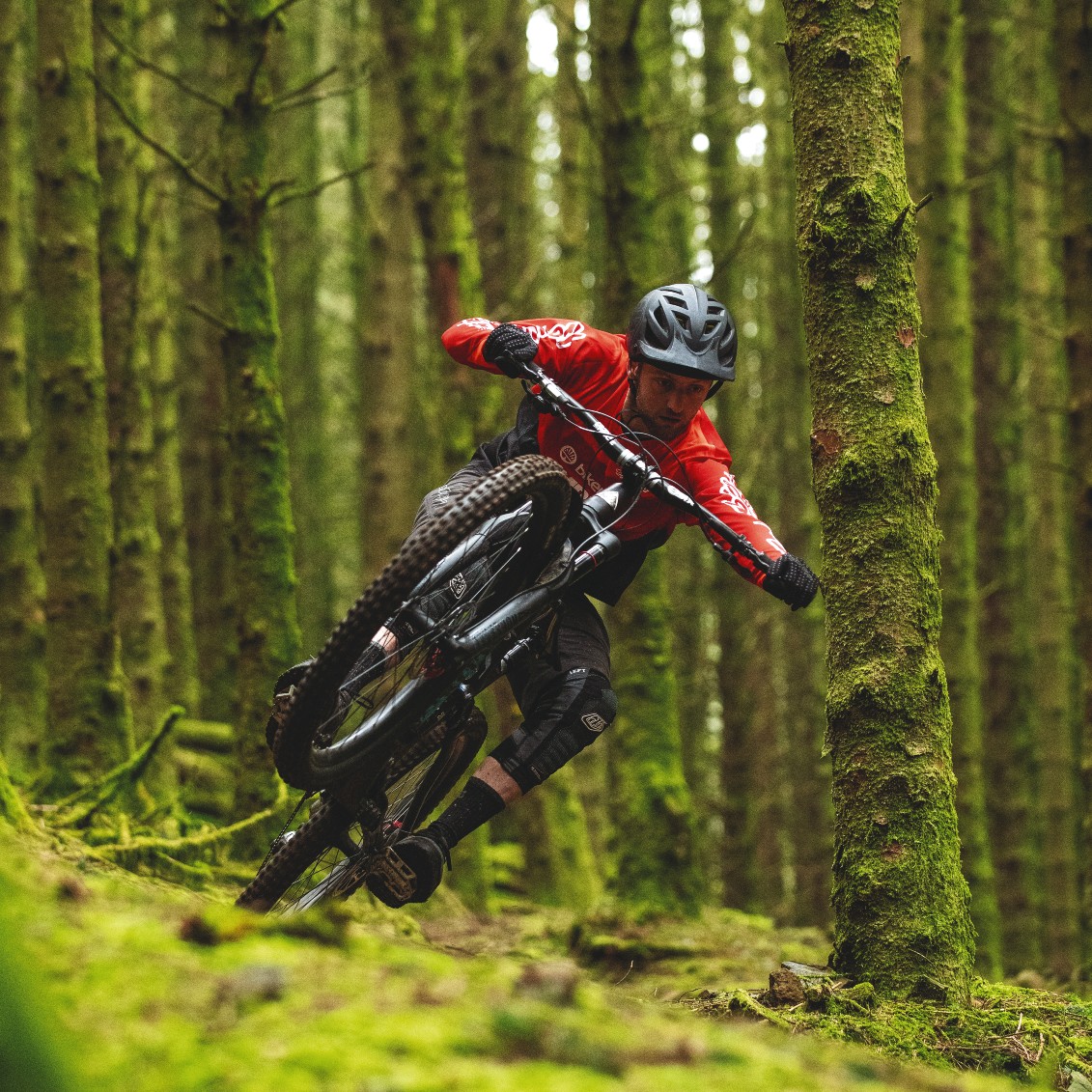When setting up your bike (suspension, cockpit, tyres, brakes), it’s important to find a familiar and consistent base setting so that you feel comfy on the bike and know how it’ll react in different situations. You can then adapt that set-up to compensate for changes in conditions and terrain without drastically changing the feel of how the bike rides. Just be sure to note your base settings before making any tweaks!
- 5 quick ways to get your mountain bike ready for a season of mud
- The complete guide to winter mountain biking
1. Tyres
Tyres make a huge difference to how your bike handles. In dry conditions, tyres have a lower-profile tread for faster rolling, while in wet conditions tyres have taller, more widely spaced knobs that are designed to dig into soft ground and shed mud better. There’s a lot of good all-round tyres available, so often a quick pressure adjustment is all that’s needed. Add 3-6psi in the dry to make your tyres more resistant to punctures. Remove around the same in the wet to help them grip.
2. Suspension
The general rule is to set your suspension up hard for dry and fast riding, and soft for the wet. In the dry, firmer suspension will help you skip across holes. A slightly faster rebound speed will also stop the fork and shock ‘packing down’ through multiple hits. In the wet, soften the suspension and slow down the rebound slightly to help your tyres track the ground for more traction. In both cases, start by adding/removing 10-20psi of pressure front and rear, and adjust the rebound by a couple of clicks.
3. Pedals
Clips or flats? Both have their pros and cons. For predictable summer conditions and when the trail is fast and rough, a set of clipless pedals will help you keep your feet where you want them. Clips also have benefits in helping you to ride consistently and save energy on long days in the saddle. Flat pedals come into their own when a trail is wet or has lots of loose corners, allowing you to adjust your foot position or even dab if things get out of control.
4. Grips
Planning on taking on some long, arm-burning alpine descents? Running a set of slightly fatter grips will mean you won’t have to hold on quite so hard and may reduce arm pump. For wet weather riding, grips with a more pronounced pattern will give you more purchase when slippery, especially if you take a digger and put your hands down in the slop.
5. Mud mods
The most obvious thing to do in the wet is fit a fork-mounted mudguard to keep the spray and muck out of your eyes. On some frames, a modified guard attached to the rear swingarm can help keep mud out of the linkages. Alternatively, you can use moto foam. It’s a lightweight sponge that won’t hold water and can be cut into shapes and pushed into crevices on the bike to stop mud collecting and weighing you down.
6. Bar and brakes
When speeds are higher and the hits are bigger, like in the Alps, or you’re riding steeper tracks, try putting another headset spacer or two under your stem to lift up the front end and help you get your weight over the back of the bike. Levelling your brake levers (or at least moving them up a bit) will help with this too. For tight and twisty trails, you’ll want to drop the front end and angle the brake levers down to help you weight the front wheel and manoeuvre around tight turns more easily.
